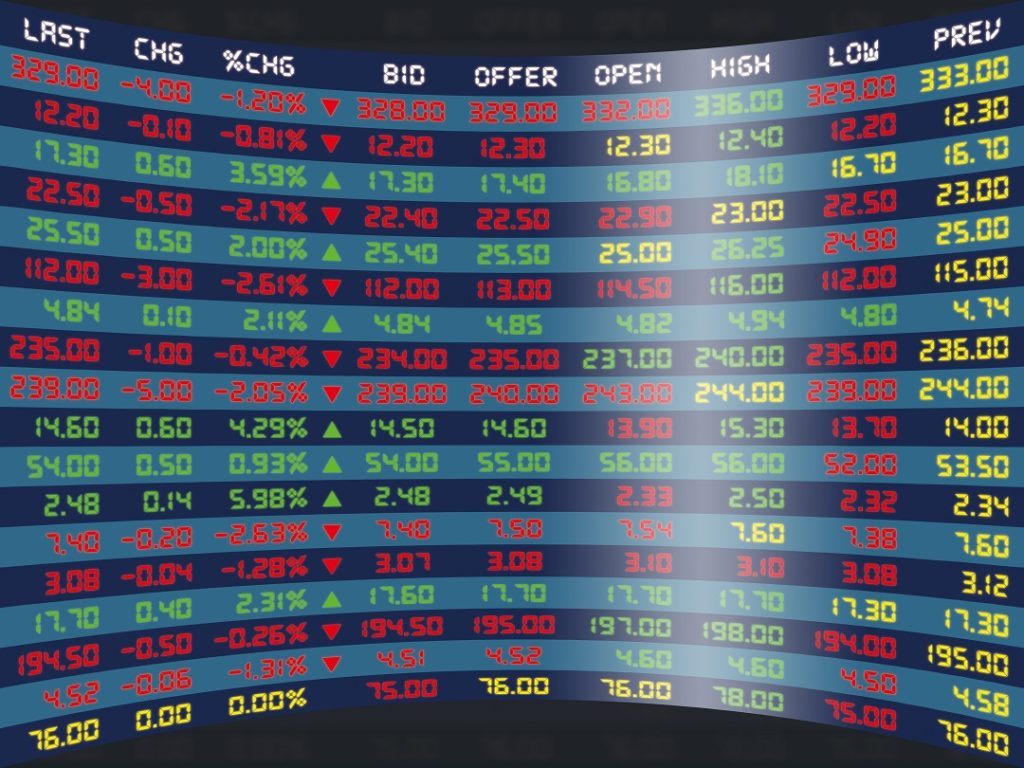What are Index stocks?
Indexes are metrics that are used to track a group of stocks in a standardized way.
The index can cover a few stocks, such as the Nifty Bank, BSE Smallcap, BSE Midcap, etc. Indexes can also cover the entire market.
The two market indexes in India are the BSE and NSE. Many types of investments are evaluated against the performance of market indexes. Indexes have many useful features. Instead of outperforming an index, investors can model a passive income portfolio that is modelled off an index.
This is increasingly popular, as it is low risk, and can get you pretty good returns. As the index grows, the portfolio grows as well. In the stock and bond markets, indexes represent a hypothetical portfolio of securities. This means that an index can essentially be made up of several companies. When you buy index funds, you are buying shares of the respective companies.

Indexes as Benchmarks
Indexes have two traits that allow investors to use them as benchmarks.
The numerical value, and the relative change. The numerical value tells investors how much the index has increased over time, from its original value. The SENSEX had a base value of 100 in 1979.
If the value today is around 60,000, that means the value has increased 600 times in 42 years. The relative change tells the investor how much it has increased or decreased in the trading session. This helps investors get an idea about the state of the market. If the majority of indexes are falling, there is a good chance that the market is falling as well.
Index Funds
Index funds are mutual funds that have a portfolio of companies part of a financial market index. This fund requires little to no management, as the amount invested is divided into companies from the index, without any specific selection.
This is a great form of passive fund management, as there is no portfolio manager. Instead of trying to outperform the market, index funds grow with the market. In India, there is an index fund for all the major indexes.
For example, there are Nifty, Sensex, Nifty Bank, Nifty Midcap 150 and many more such index funds. Such portfolios containing index funds only change when the index changes. Index funds have been known to perform traditional mutual funds in the long run.
A famous example of this was Warren Buffet’s $1 million bet. He bet that an index fund would outperform the best hedge fund in the world, and he was right.
How Does A Stock Go To The Index List?
Stocks are added and removed from indexes regularly. The reason for this is that the indexes need to represent the economy as a whole.
The index re-shuffles itself 2 times a year. Other major indexes across the world have different re-shuffling time periods, but most are at least 1 time a year. In 2000, Nifty was mainly made up of IT companies. In 2007, oil companies made up the majority of the index.
Today, 35% of the Nifty Index is constituted of banking and financial companies. Sometimes, underperforming firms are removed from the index and replaced with better companies.
Other times, companies can enter an index, just due to sheer market cap. Companies can also be removed from the index due to a spin-off, merger or acquisition
Criteria To Enter The Nifty
The criteria to enter the Nifty are as follows;
- The stock should have traded at an average 0.5% impact cost, or less, for 90% of observations in the last 6 months.
- Note: Impact cost is the cost that a buyer or seller of stocks incurs while executing a transaction due to the prevailing liquidity condition on the counter. In other words, it represents the cost of executing a transaction of a given security, with a specific predefined order size, at any given point in time.
- The stock should have at least twice the float-adjusted market capitalization of the current smallest company in the Nifty index.
- The company must be domiciled in India
- The company must be traded on the NSE.
- The stock must be available for trading in the futures and options segment on the NSE
Some other factors that are considered are market capitalization, liquidity and trading frequency.
The India Index Services and Products, a group company of the National Stock Exchange of India, owns and manages 67 indices under the Nifty brand, including the Nifty index.
IISL has constituted the Index Maintenance Subcommittee which makes all decisions on inclusions and exclusions in the index.
When a stock is added to an index, the index divisor is adjusted so that the inclusion doesn’t change the index value. The same is done for exclusions from the index.
How is Index Movement Calculated?
An index is created by selecting a group of stocks and then applying either a direct (simple) or indirect (complex) calculation to determine the weighting of each stock.
An example of a direct calculation would be adding together the share prices of all the included stocks and using that total as the index price.
An indirect calculation could involve adding all the share prices, dividing by the number of stocks, and then multiplying by their individual average trading turnover, market cap, or any other variable.
Most of the markets in the world use an indirect method to calculate the value of the index.
The same goes for the NSE. With the NSE, it is based on a computed based on a float-adjusted and market capitalisation weighted method. The level of the index demonstrates the aggregate market value of the stocks in a specific period.
The base value of the index is considered 1000 and its base capital stands at Rs. 2.06 Trillion. The formula to calculate the index value is as follows
Index value = Current MV or market value / (Base Market Capital * 1000)
What Are The Advantages Of Following The Index?
It can provide statistical information on the position of the market, and which sectors are doing well. We can also judge the state of the market using various financial indicators, which use the indexes as the base.
The historical data of the indexes can also be used to guide investors on the market’s patterns, and how the price of stocks change over time.
Indexes also group together stocks from particular sectors. For example, the Nifty Bank index can tell us how well the banking sector is doing, on a particular day.
We can see the price history, peer to peer review, volatility, and much more such information on the movement of the market, and individual stocks as well. We also understand the emotions of investors through the indexes, based on price changes.
What Are The Methods To Buy An Index?
Since indexes are just imaginary portfolios of companies, we cannot “directly” buy an index. Hence, there are a few different ways we can indirectly buy an index. We can buy index funds, exchange-traded funds, index futures, and index options. All of these different methods have their own pros and cons and are different in their own way.
Index Funds
Index funds are mutual funds that have a portfolio of companies part of a financial market index. This fund requires little to no management, as the amount invested is divided into companies from the index, without any specific selection.
Exchange-traded Funds
Exchange-traded funds are very similar to index funds. They track indexes, just like index funds, and contain the stocks in an index. The main difference between index funds and exchange-traded funds is that ETFs can be traded just like a stock, on an exchange. The price of the ETF is determined by its NAV (Net asset value) which takes into account the securities in the fund.
Index Futures
Index futures are contracts when an investor can buy an index fund today, and settle it at a future date. With index futures, investors speculate on the future price of the index. The investor is obliged to pay the decided cash amount at the future date unless the contract is unwound before the expiration date.
Index Options
Index options are similar to index futures, but there is no obligation to buy or sell the underlying value of the index. The contract has an expiration date and if you want to wait even longer than the expiration date, you need to extend the expiration date.




